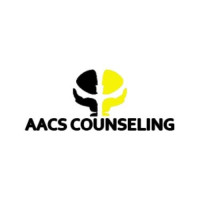Failed a DOT Drug Test? What Truck Drivers Must Know About the SAP Program (2025)

Failing a Department of Transportation (DOT) drug or alcohol test is a serious matter, especially for commercial drivers holding a CDL (Commercial Driver’s License). While it can feel like the end of the road, it doesn't have to be. The DOT SAP Program offers a structured pathway to regain your qualifications and get back to work safely.
This guide will walk you through everything you need to know about DOT drug tests, the implications of failing, and how the SAP program can help you get back behind the wheel.
1. Understanding the DOT Drug Testing Policy
To uphold safety across the transportation industry, the Department of Transportation (DOT) mandates drug and alcohol testing for all safety-sensitive employees, particularly CDL drivers. This policy includes regular and situational tests, ensuring accountability and reducing risks on the road. Understanding these requirements is essential for compliance and maintaining a professional driving career while prioritizing public safety.
Who Is Required to Take DOT Drug Tests?
All CDL drivers operating vehicles under DOT regulations must participate in drug testing to ensure road safety. This applies to drivers of vehicles weighing 26,001 pounds or more, transporting hazardous materials, or carrying 16 or more passengers, including the driver.
Tests occur at key points, including pre-employment, post-accident, random, reasonable suspicion, return-to-duty, and follow-up testing. Each type aims to minimize risks and ensure compliance. These tests play a crucial role in upholding safety standards and ensuring drivers meet strict regulatory requirements while mitigating impaired driving risks.
What Substances Are Tested?
The DOT drug test screens for the following five categories of substances:
- Marijuana (THC)
- Cocaine
- Opiates (including heroin, morphine, and codeine)
- Amphetamines and methamphetamines
- PCP (phencyclidine)
- Alcohol testing is also conducted in specific situations, such as post-accident or reasonable suspicion.
2. What Happens After Failing a DOT Drug or Alcohol Test?
Failing a DOT drug or alcohol test comes with significant consequences, reflecting the transportation industry's commitment to safety. It can result in immediate removal from safety-sensitive duties, impact a driver's commercial driving career, and require completion of the SAP program before returning to work. These measures are in place to uphold safety standards and protect everyone on the road.
Immediate Consequences
Upon failing a test:
- You are immediately removed from safety-sensitive duties, such as driving a commercial vehicle.
- Your employer is required to report the result to the DOT Clearinghouse.
- Impact on CDL and Employment
Failing a DOT test doesn’t mean you lose your CDL permanently, but you cannot perform any DOT-regulated tasks until you complete the SAP program. Depending on your employer’s policies, you might also face suspension, termination, or difficulty finding future employment.
3. What Is the DOT SAP Program?
The DOT SAP program is a rehabilitation process that helps CDL drivers address their substance use, comply with DOT regulations, and requalify for safety-sensitive functions.
Role of a Substance Abuse Professional (SAP)
A SAP is a certified professional trained to evaluate and guide individuals through the recovery process. They ensure you address substance abuse issues and provide a plan for returning to work safely.
Purpose of the Program
The SAP program aims to:
- Help drivers resolve substance abuse issues
- Ensure public safety by setting strict compliance requirements
- Provide a clear pathway for drivers to return to DOT-regulated jobs
4. Step-by-Step SAP Process for Truck Drivers
While the program can seem daunting, it follows a clear step-by-step process:
- Initial Evaluation with a SAP: The first step is a face-to-face evaluation with a certified SAP. During this session, they assess the nature of your substance use and determine the appropriate level of care.
- Education and/or Treatment Plan: Based on the evaluation, you’ll either complete an education or treatment program. Education typically involves counseling or classes, while treatment may include outpatient or inpatient rehabilitation.
- Follow-Up Evaluation: Once you finish the education or treatment program, you’ll meet with the SAP again for a follow-up evaluation. The SAP will verify that you’ve completed the program and determine if you're ready for the next steps.
- Return-to-Duty Drug Test: Before returning to safety-sensitive duties, you must pass a DOT return-to-duty drug or alcohol test. This test is strictly monitored to ensure accuracy.
- Ongoing Follow-Up Testing (If Required): The SAP may recommend follow-up testing over a period of months or years. This ensures you remain compliant and substance-free while performing DOT-regulated duties.
5. How Long Does the SAP Program Take to Complete?
The completion timeline varies depending on your treatment requirements and compliance.
Average Timelines
- On average, the SAP program takes 30 to 90 days. If extensive treatment is needed, it may take longer.
- Factors That May Delay the Process
Delays can occur if:
- You miss scheduled appointments or sessions
- You need extended treatment
- You fail the return-to-duty or follow-up drug tests
6. Cost of the DOT SAP Program: Who Pays and What to Expect
Participating in the SAP program involves costs, which vary depending on your location, SAP fees, and treatment type.
- Typical Pricing: SAP evaluations generally range from $300 to $500. Education or treatment programs can cost anywhere from $1,000 to $2,000 or more, depending on the level of care required.
- Employer vs. Employee Responsibility: Legally, the employee is responsible for all costs related to the SAP program, unless the employer offers financial assistance as part of their workplace policies or benefits.
7. How to Choose a DOT-Qualified SAP Near You
- Finding a qualified SAP is essential for completing the program successfully.
- What to Look for in a Certified SAP
Make sure your SAP:
- Is certified by DOT-approved organizations
- Has experience working with CDL drivers
- Is clear about fees and program expectations
- Resources for Finding Approved Professionals
You can find a DOT-qualified SAP through:
- The DOT’s Clearinghouse website
- Employer resources or recommendations
- Local transportation associations
8. Returning to Work After Completing the SAP Program
After successfully completing the SAP program and passing the return-to-duty test, you can begin the process of returning to work.
- Steps to Re-Qualify for DOT Safety-Sensitive Duties: Once you pass the steps outlined by your SAP, you’ll regain clearance to perform safety-sensitive functions. Employers report the clearance to the DOT Clearinghouse.
- Employer Reporting and Clearinghouse Updates: Your SAP program completion and return-to-duty results will be documented in the DOT Clearinghouse, clearing the way for your return to work.
9. Avoiding Future Violations: Tips for Staying Compliant
Staying compliant with DOT regulations ensures your continued success as a CDL driver.
- Regular Testing Awareness: Stay informed about DOT drug testing procedures, including when random or follow-up tests may occur. Avoiding banned substances entirely removes the risk of failing.
- Substance-Free Work Habits: Avoid environments that encourage substance use and adopt a lifestyle that prioritizes your professional obligations.
- Employer Assistance Programs (EAPs): Many employers offer EAPs to support employees dealing with substance abuse issues. Take advantage of these resources to seek help early and avoid further violations.
10. FAQs About the DOT SAP Program for CDL Drivers
Can I Switch SAP Providers Mid-Program?
Switching providers is not recommended as the new SAP may require you to start over. However, under special circumstances, you may switch with proper approvals.
Will This Stay on My Record Permanently?
Yes, failed DOT test results remain in the Clearinghouse for five years or until follow-up testing requirements are complete, whichever is longer. Employers may access this information during background checks.
Final Thoughts
Failing a DOT drug test can feel like a roadblock, but the SAP Evaluation provides a clear path forward. By meeting all the requirements, seeking the right support, and committing to substance-free habits, CDL drivers can regain their licensure and continue their careers in transportation. Remember, the SAP program isn’t just about compliance; it’s about ensuring safety—for you and everyone on the road. Take the first step today and put yourself back on the path to success.
Note: IndiBlogHub features both user-submitted and editorial content. We do not verify third-party contributions. Read our Disclaimer and Privacy Policyfor details.







